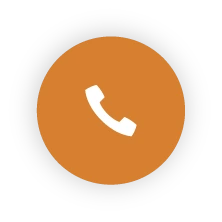Ecommerce website design tips for Dubai’s competitive market

Dubai’s ecommerce landscape is booming, and businesses are vying for attention in an ever-growing digital marketplace. In such a competitive environment, your ecommerce website is not just a storefront – it’s your business’s first impression. To stand out in this digital-first market, your website design needs to be sleek, functional, and user-friendly. Here are some essential tips to help you build an ecommerce website that’s not only visually appealing but also highly effective in converting visitors into customers.
1. Mobile-first design
Let’s face it: mobile shopping is on the rise, and in Dubai, it’s no different. With most consumers browsing and shopping through their phones, a mobile-friendly website isn’t just a luxury – it’s a necessity. Mobile-first design ensures your website loads quickly, displays beautifully, and provides a seamless shopping experience, whether your customers are on a smartphone or tablet. The last thing you want is for a potential buyer to abandon their cart because your site is difficult to navigate on mobile.
2. Fast loading speed
In Dubai’s fast-paced environment, consumers don’t have the patience to wait for slow-loading pages. If your website takes more than a few seconds to load, you’re likely to lose valuable customers. A slow website not only frustrates visitors, but it can also hurt your search engine rankings. Focussing on optimising images, reducing unnecessary elements, and ensuring your hosting solution support the traffic you expect to drive.
3. Clear navigation and intuitive user interface
A cluttered website is a turn-off. Your ecommerce site should be easy to navigate, guiding customers seamlessly from product discovery to checkout. Categories should be clearly defined, and search functions should be easy to find and use. In Dubai’s diverse market, where customers come from different backgrounds and cultures, making your site intuitive will help cater to a wider audience and enhance user satisfaction.
4. High-quality imagery and product descriptions
It’s simple: great visuals sell. In a place like Dubai, where aesthetics are valued, high-quality images of your products are a must. But don’t stop there – detailed product descriptions, including size, color, and material specifications, will help build trust and answer potential buyers’ questions before they even ask. When shopping online, consumers are looking for as much detail as possible to make informed decisions.
5. Local payment gateways
Dubai’s ecommerce market is diverse, with people from all around the world making purchases. Offering local payment options, like UAE-based credit cards or wallets, can make the purchasing process easier and more familiar to customers. Providing a variety of payment methods increases trust and encourages conversions, as customers prefer paying in a way that suits them best.
6. Strong call-to-action (CTA)
Never underestimate the power of a strong call-to-action (CTA). A clear and compelling CTA, like “Shop now,” “Add to cart,” or “Buy today,” can push visitors to take the next step. Placement matters – make sure these buttons are strategically positioned, easy to spot, and stand out visually.
7. Trust signals and reviews
When shopping online, especially in a competitive market like Dubai, trust is everything. Displaying trust signals such as SSL certificates, secure payment icons, and customer reviews can reassure potential buyers. Including positive reviews or testimonials from satisfied customers can go a long way in building credibility and influencing purchasing decisions.
By implementing these tips, your ecommerce website will not only stand out but also provide your customers with a seamless shopping experience. The key to success in Dubai’s competitive ecommerce market lies in delivering a high-quality user experience that keeps them coming back for more.







